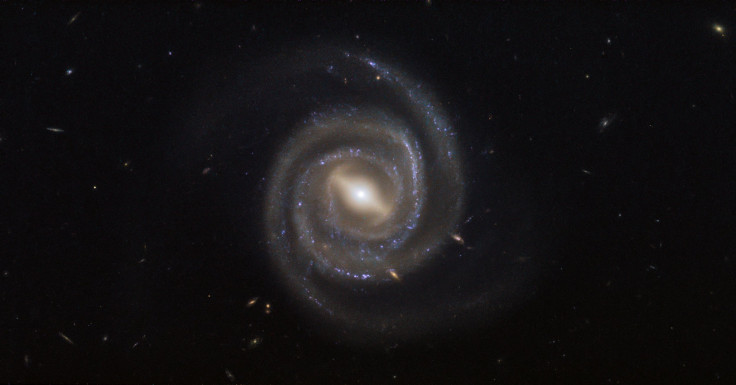Six ‘Dark Galaxy’ Candidates Discovered With Little To No Stars

Astronomers have discovered as many as six dark galaxy candidates, bizarre galaxies that appear to host little to no stars some 12 billion light-years away.
Though galaxies are supposed to be bustling with stellar bodies, the dark ones make a rare exception. They are inefficient at forming shining stars and are filled with great amount of matter and gas that emit too little light for modern-day telescopes to catch, ScienceAlert reported.
Some think these systems formed as an integral part of galactic formation, with many theoretical models indicating they would have been around during the early days of our universe when star formation wasn’t as common and easy as it became later.
However, not much data evidence has been acquired to delve into these galaxies and understand their formation and evolution. The reason to blame is the lack of sufficient visible light that makes it extremely difficult for astronomers to catch a glimpse of a dark galaxy.
This is why the latest discovery made by physicists at ETH Zurich holds importance. The team, as the report noted, found the dim galaxies by leveraging capabilities of quasars, distant objects powered by supermassive black holes a billion times as massive as our sun.
Quasars make some of the brightest objects in our universe and shine so brightly that they eclipse containing them. However, the light these objects emit is not the result of the black hole, but the friction produced in the accretion disk of gas and stars surrounding it.
The intense ultraviolet light from a quasar fluoresces nearby hydrogen atoms, giving an emission called Lyman-alpha line. This way it acts as a flashlight of sorts and allows the astronomers to see if any dark galaxy, full of hydrogen, is sitting in close proximity of the quasar.
“The signal from any dark galaxies in the vicinity of the quasar gets a boost, making them visible,” the researchers said, Sci-News reported.
Six years ago, astronomers detected a handful of dark galaxies by applying this technique with European Southern Observatory’s Very Large Telescope. But then, in 2014, the telescope was upgraded with Multi Unit Spectroscopic Explorer or the MUSE instrument, which helped them peer into the neighborhood of quasars sitting much farther away from those seen back in 2012 and find the six galaxies.
The researchers observed each of the six quasar fields for ten hours. The observation helped them distinguish the potential dark galaxy candidates from some 200 Lyman-alpha sources and categorize them as unlikely to be normal star-forming systems. Once the galaxies were identified, they obtained spectral information for each one of them.
The study titled, "Dark Galaxy Candidates at Redshift ~3.5 Detected with MUSE," was published May 23 in the Astrophysical Journal.
© Copyright IBTimes 2025. All rights reserved.





















